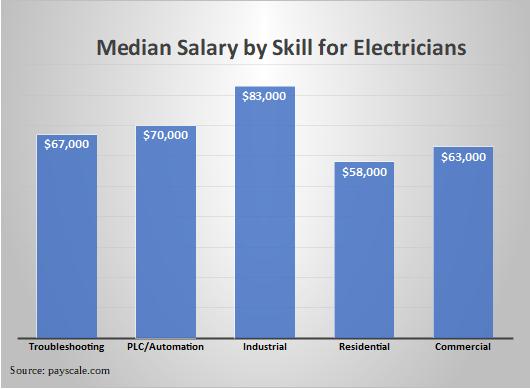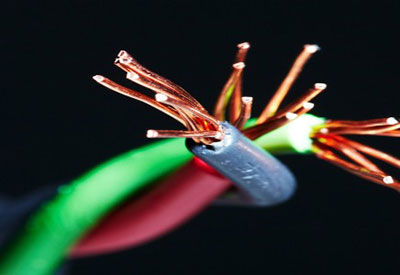Guide to the Canadian Electrical Code, Part I — Instalment 5

Feb 6, 2020
By William (Bill) Burr
Often, code users encounter situations where they find themselves at odds with the rules contained in the CEC, Part I. These situations can occur for designers, consultants, installers, inspectors, manufacturers, students, instructors and standards developers alike, and these situations usually are a result of a misreading, misunderstanding, misapplication or inability to locate the requirement that is needed or that is relevant to their tasks. The code is a comprehensive document. Sometimes, it can seem quite daunting to quickly find the information you need. In this current series of articles, I will provide a guide to help users find their way through this critical document. This is not intended to replace the notes in Appendix B or the explanations of individual requirements contained in the CEC Handbook, but will hopefully provide some help in navigating while reading the code.
Section 10 is a general section of the code and applies to all installations unless amended by other sections of the code. Note additionally, that Section 10 was completely rewritten for the 24th edition of the code.
Rule 10-000 the Scope outlines requirements for
• grounding of solidly grounded systems, impedance grounded systems, and ungrounded systems, as well as
• bonding
• equipotential bonding
Rule 10-002 outlines the overall objective for grounding and bonding to minimize electric shock and prevent damage to property, and refers to Appendix B for additional explanation.
Rule 10-004 outlines the special terminology used in this section and includes and defines
• equipotentiality
• grounded conductor
• impedance grounded system
• impedance system bonding jumper
• separately derived system
• solidly grounded system
• system bonding jumper
• ungrounded system
Additional explanations of these terms are given in Appendix B.
Grounding — general
Rule 10-100 requires that there be no objectional current flow over a grounding conductor.
Rules 10-102 to 10-108 govern the consistency, manufacture, assembly and interconnection of grounding electrodes.
Rules 10-110 to 10-118 provide requirements for continuity, material, size, installation and connection of grounding conductors.
Solidly grounded systems
Rules 10-200 to 10-214 outline the requirements for solidly grounded systems and include:
• requirements for DC Systems to be solidly grounded
• which DC conductor to be grounded
• connection of the grounding conductor for the DC system
• which AC Systems are required to be solidly grounded
• which conductor of an AC system to be grounded
• methods for connections for solidly grounded AC systems supplied by the supply authority
• methods for connections for solidly grounded separately derived AC systems
• methods for connections for portable generator assemblies and vehicle-mounted or mobile generators
Impedance grounded systems
Rules 10-300 to 308 provide requirements for the use, devices, warning signs and conductors in impedance grounded systems.
Rule 10-300 requires that an impedance grounded system be maintained by a qualified person.
Rule 10-302 outlines the use of impedance grounded systems with
• insulation of ungrounded conductors
• monitoring of its integrity
• providing a clearly annunciating, labeled and continuous audio or visual alarm on the occurrence of a ground fault or loss of continuity of the impedance grounding circuit
• automatically and immediately de-energizing the circuit on the occurrence of a ground fault, except where the system is operating at 5 kV or less; the system serves no neutral loads; the ground fault current is controlled at 10 A or less; and the impedance grounding device is rated for continuous use
Rule 10-304 specifies conditions for permitting non-continuous ratings and insulation voltage for impedance grounding devices.
Rule 10-306 provides guidelines for the wording and location of warning signs for impedance grounding devices.
Rule 10-308 gives specifications for the insulation, identification, routing, size, protection, and connection of conductors used with impedance grounding devices.
Ungrounded systems
Rules 10-400 and 10-402 describe the permitted conditions of use and grounding connections for equipment in ungrounded systems and includes:
• requirement for ground fault detection and maintenance by qualified persons
• continuous, clearly labelled visual or audible alarm on the occurrence of a ground fault
• exemption for extra-low-voltage DC or AC systems
• no connection between the grounding conductor and any system neutral
• grounding conductor must connect the grounding electrode to the non-current-carrying conductive enclosure of the supply equipment of separately derived systems or the service box
Bonding — general
Rules 10-500 to 10-506 provide characteristics, material and continuity of bonding conductors and includes:
• no objectional current over a bonding conductor
• removal of all coatings to provide a clean electrical connection
• minimize galvanic action where dissimilar metals cannot be avoided
• maintain continuity of the bonding conductor unless cut-out disconnects all sources of energy
Equipment bonding
Rules 10-600 to 10-614 outline requirements for the bonding of the non-current-carrying parts of fixed electrical equipment.
Rule 10-602 requires that a bonding conductor be installed in the run of each group of parallel cables, raceways or bus.
Rules 10-604 and 10-606 describe the method and assurance of continuity of bonding for service equipment and other than service equipment.
Rule 10-608 requires separate bonding conductors where metal raceways serve as the bonding conductor and include expansion joints or telescoping sections.
Rules 10-610 to 10-614 outline the bonding means, connections and size of bonding jumper or conductor for fixed equipment.
Equipotential Bonding – See Appendix B for additional explanation.
Rules 10-700 to 10-708 provide the requirements for equipotential bonding of non-electrical equipment and includes:
• parts of non-electrical equipment to be bonded
• installation of conductors
• material for bonding conductors
• effective connection
• size of bonding conductors
In the next instalment, we will be discussing: Section 12 — Wiring Methods.
William (Bill) Burr is the former Chair of the Canadian Advisory Council on Electrical Safety (CACES), former Director of Electrical and Elevator Safety for the Province of BC, and former Director of Electrical and Gas Standards Development and former Director of Conformity Assessment at CSA Group. Bill can be reached at Burr and Associates Consulting billburr@gmail.com.










![Guide to the Canadian Electrical Code, Part 1[i], 26th Edition – A Road Map: Section 10 – Grounding and Bonding](https://electricalindustry.ca/wp-content/uploads/2022/11/Guide-CE-Code-2.png)





